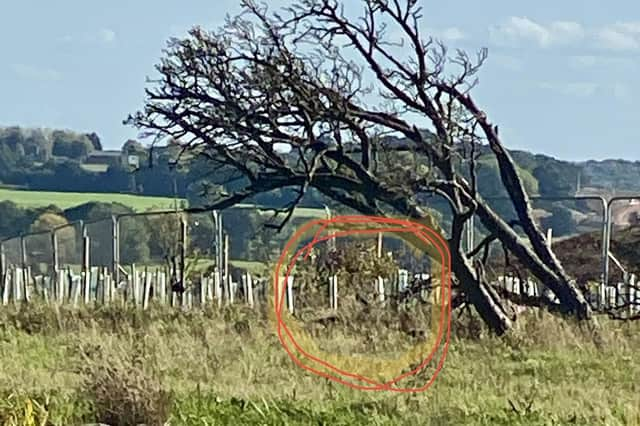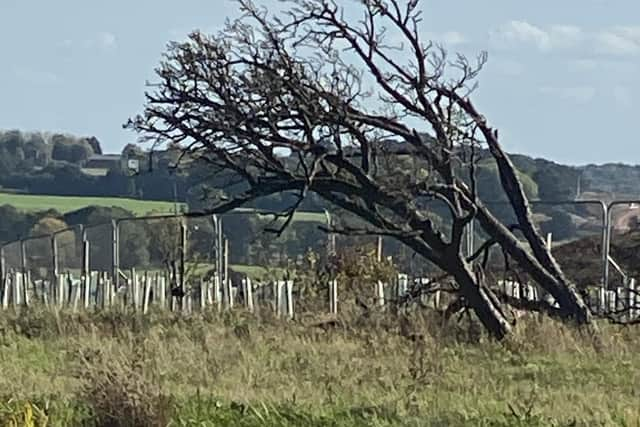Ancient Cubbington pear tree 'lives on' after it was felled during HS2 works


The beloved ancient pear tree in Cubbington, felled to make way for HS2 three years ago this month, is regrowing from its stump which was moved to a nearby site.
The tree, thought to be more than 250 years old and which stood at the top of a hill near the south-west of South Cubbington Wood overlooking the Leam Valley, was cut down on October 20 2020.
Advertisement
Hide AdAdvertisement
Hide AdIn 2010 villager and Cubbington Stop HS2 campaigner Rose Guiot mentioned the tree to Steven Falk, the senior curator of natural history at Warwickshire Museum, who assessed it and reported to Owen Johnson of the Tree Register.


It features on the National Champion Tree Register and won the Tree of the Year Award in 2015.
The significance of the tree and its impending fate were reported nationally in 2011 and it became a symbol of the fight to prevent extensive environmental damage by HS2.
In 2014, following media coverage, Cubbington Action Group was contacted by Paul Labous, a horticultural lecturer at Shuttleworth College in Bedfordshire.
Advertisement
Hide AdAdvertisement
Hide AdPaul successfully grafted another old variety of pear and offered to attempt the same with the Cubbington tree.
After multiple attempts, a single graft was obtained.
Since then, propagation has continued, mostly by means of bud chipping, and in January 2019 15 maiden saplings were brought back to Cubbington to be planted in and around the village.
Both schools in the village have a sapling, one is planted in the churchyard and others have been offered to sites where they will be safe
and cared for.
To date Cubbington Pear saplings from Shuttleworth College have been donated as follows – Cubbington churchyard, Cubbington CofE School, Cubbington recreation ground, Our Lady and St Teresa’s School in Cubbington, Brandon Marsh Nature Reserve, Guy’s Cliffe Walled Garden, Hill Close Gardens and Priory Park in Warwick, Radford Semele, Forest of Hearts in Stratford and the Midland Oak park in Lillington.
Two of these flowered in April.
Advertisement
Hide AdAdvertisement
Hide AdOne sapling is currently still being cared for in Cubbington prior to being planted.
Sadly, further saplings grafted at Shuttleworth College before Covid fell victim to a breakdown of the automatic watering system during the pandemic and further saplings may no longer be available.
Rose said: “The pear tree lives on, however, the original root plate was excavated and moved a few yards away from the line of the rail track and left to its own devices.
"We are delighted to say that new basal growth from the root plate, first reported in spring 2021 continued in 2022 and 2023, due to the water retention properties and nutrients of the heavy clay soil.
"What happens in years to come, we have no way of knowing.
Advertisement
Hide AdAdvertisement
Hide Ad"It would be wonderful if it put out a leader shoot and started to become a tree again instead just producing shrubby growth.
"The root plate is situated in the same type of clay soil now as it was before the tree was felled: ie fertile and water retaining.
"Even in the driest summer when the surface cracks, there seems to be water deeper down and pear trees are supposed to do well on clay.”